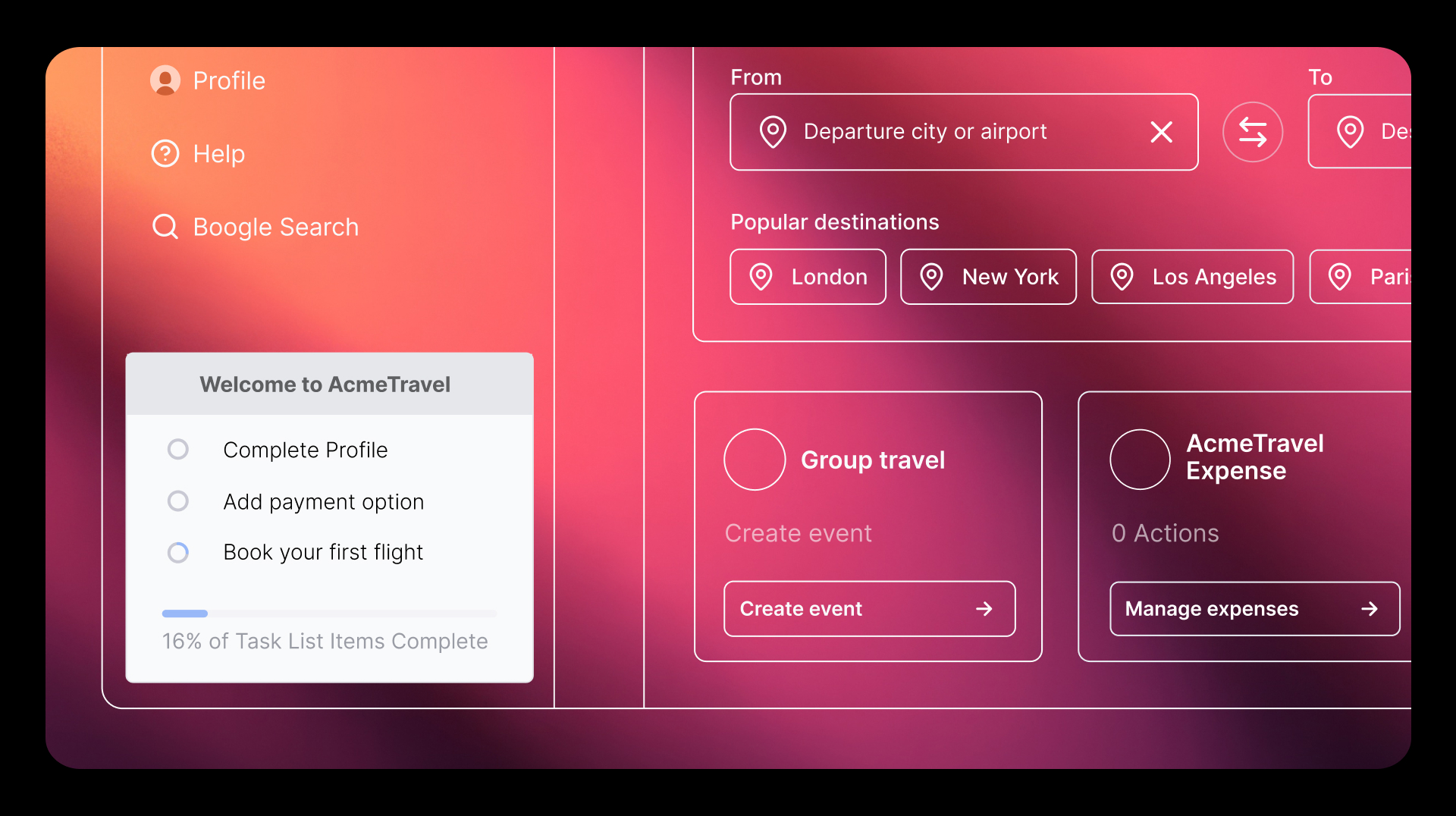4 ways to ensure employee success with Microsoft Dynamics 365
When companies implement Microsoft Dynamics 365, they are confronted with a critical question: How can I get hundreds or thousands of employees to use the software correctly and productively?
Dynamics is a suite of software solutions that delivers value across an entire enterprise–from sales and HR to finance and operations teams. Although it offers convenience, this strategy comes with its challenges. Large scale deployments of these tools are wide, deep, and inherently have complexities in process, UX, and beyond.
So, once you’ve made an investment in Microsoft Dynamics, how do you ensure employees leverage it successfully? It’s not only about ensuring employees actually use the tools at their disposal (although this is a key first step), but that they can leverage them to make their jobs easier, faster, and more efficient.
Here are four ways to ensure you get the most out of your Microsoft Dynamics 365 solutions:
1. Streamline onboarding and training
The forgetting curve tells us that only 25% of information that has been repeated once will remain in people’s memories after the first hour. Still, employees are often asked to sit through lengthy software onboarding and training sessions and aren’t able put this information into practice until much later down the line–if they remember it in the first place. If you want users to retain this knowledge, constant reinforcement is a scientifically proven requirement.
For a platform as powerful as Dynamics 365, leaving onboarding and training to chance could result in an overflow of support requests from confused users, disregard of mission critical processes, data hygiene and reporting challenges, and ultimately, a poor customer experience. The best way to combat the forgetting curve is by providing employees with just-in-time guidance while they’re using your Dynamics instance, and on an ongoing basis.
For example, let’s say you’re onboarding a new cohort of customer service agents and there are certain data entry requirements they need to comply with every time they speak with a customer. Rather than telling them about these requirements one time during a training session, you can embed in-app guides that walk agents through the questions they need to ask each customer while they’re inputting data into Dynamics.
2. Understand the user experience to boost productivity
A recent Forrester report sheds light on an important notion: to increase productivity and accelerate digital transformation efforts, businesses need to turn their attention to the user experience of the software their employees rely on. To do this effectively, though, you first need to understand where your employees’ pain with technology lies–what’s causing frustration and hindering their productivity?
The best way to understand employees’ pain points is to ask them, but this can be challenging for robust software like Microsoft Dynamics, where the people who manage the technology ecosystem are disconnected from the team members in the field who actually use it.
To overcome this, teams introduce direct lines of communication to employees within the product itself. With ongoing in-app feedback and targeted surveys and polls, you’ll be able to get a pulse on employee sentiment and easily collect qualitative feedback from your Dynamics users. Digesting feedback from your sales reps, customer service agents, or other team members will help you design an experience that improves morale and makes it easier for your team to do their jobs effectively.
3. Personalize communication for users’ roles
One of the benefits of Microsoft Dynamics is that it includes many different solutions that can be used across multiple teams in an organization. This means, though, that different people are going to be using the tool in drastically different ways. Businesses need to be strategic about how they enable their employees to use Microsoft Dynamics, so that every employee is educated and empowered to use this technology successfully.
The ability to target in-app messages and training to specific types of users (i.e. based on their role) is crucial to ensuring employees succeed and deliver on what’s asked of them. Admins don’t have time to sit down with every employee and train them on exactly what they need to do in the software applications they’ll use to do their jobs. By moving these communications inside the tools themselves, you can meet team members where they already are and personalize information to their specific needs and roles.
4. Encourage workflows that drive efficiency
When it comes to complex software products like Microsoft Dynamics, there’s usually more than one way to get a job done. That said, there probably is an optimal way. Teams need to ensure every employee is leveraging Dynamics in the most optimal way for their role. Although inefficiencies may seem like only a few extra clicks, they add up to hours of wasted time.
Product analytics can help you better understand user behavior and identify the optimal paths employees should take to accomplish key outcomes within their specific Dynamics solution. Once you know which features or workflows lead to positive outcomes, you can leverage in-app guides to steer employees to these areas of the tool and offer ongoing training within the product itself. This way, you’re able to reinforce workflows you know correlate with success.


